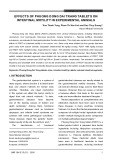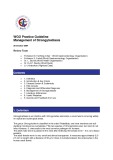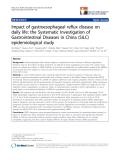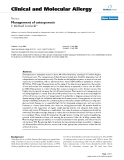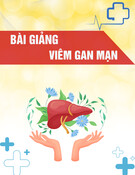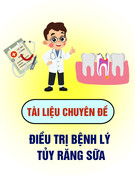WGO Practice Guideline Osteoporosis and gastrointestinal diseases
7 October 2003, revised June 2004
Review Team
• Professor Alan B.R. Thomson University of Alberta, Canada • Dr. K. Siminoski, University of Alberta, Canada • Professor Michael Fried, University Hospital Zurich, Switzerland • Dr Roques Saenz, University del Desarrollo, Chile • Professor Henry Cohen, Clinica de Endoscopia y Gastroenterologia, Uruguay • Professor A. Elewaut, Gent University Hospital, Belgium • Professor Ole Thomsen, University of Copenhagen, Denmark • Drs. Justus Krabshuis, Highland Data, France
Sections
1. Definition 2. Epidemiology 3. Osteoporosis in GI/Liver associated conditions 4. Etiology 5. Diagnosis 6. Management of Osteoporosis 7. Literature References 8. Links to useful websites and consensus statements 9. Queries and feedback
1. Definition
Osteoporosis is a systemic disease characterized by low bone mass (osteopenia) and micro- architectural deterioration, resulting in an increased risk of fracture. (1,2).
Gastroenterologists will encounter patients in their practices with osteoporosis/osteopenia, and practice guidelines about diagnosis, presentation and treatment would be useful.
BMD
Bone mineral density
CD
Crohn's disease
DXA
Dual-energy x-ray absorptiometry
Abbreviations:
Fracture intervention trial
FIT
Follicle stimulating hormone
FSH
Glucocorticosteroids
GCS
Gamma glutamyl transferase
GGT
Gastrointestinal
GI
Hormone replacement therapy
HRT
Inflammatory bowel disease
IBD
luteinizing hormone
LH
NSAID
Non-Steroidal Anti-Inflammatory Drugs
Primary biliary cirrhosis
PBC
Primary sclerosing cholangitis
PSC
Parathyroid hormone
PTH
SERMs
Selective estrogen receptor modulators
Standard deviation
SD
Ulcerative colitis
UC
2. Epidemiology
• Peak bone mass is achieved by 30 years • After skeletal maturity, bone is lost at a rate of 0.5 - 1.0% per year • Women experience a phase of accelerated bone loss for 3-5 years after
Some simple facts:
• When bone density falls with age, fracture risk increases • The incidence of osteoporotic fracture increases dramatically with age, markedly
menopause
so after the age of 60
• 80% occur in women > 65 years • mortality rate is increased by approximately 24% in the year following the fracture the risk of death associated with hip fracture is similar to that of breast cancer - for • both the risk grows with age.
• vertebral fractures are of concern in Crohn's patients, and are associated with
Seriousness of osteoporotic hip fractures:
impaired quality of life, chronic pain, impaired ability to carry out activities of daily living, social isolation, increased hospital drugs, and increased mortality
3. Osteoporosis in gastrointestinal/liver associated conditions
3.1. Inflammatory Bowel Disease (IBD)
• Prevalence of reduced bone mineral density (BMD) in Crohn's Disease (CD) and chronic ulcerative colitis (UC) vary widely, but affect about 25% of CD and UC patients (3,4,5,6)
• Use of glucocorticosteroids (GCS) plays an important role (7,8) • Low BMD is clinically relevant, since there is a 40% increase in fracture incidence
• Bone loss 3% per year in IBD without, and 6% with use of GCS (equal risk in
in patients with IBD (9)
males and females)
• 30-50% of chronic GCS users have fractures • Prevalence and extent of osteopenia / osteoporosis in UC less than in CD • • Unlike CD, in UC osteoporosis is not usually present at the time of diagnosis and
Increased bone turnover (6)
is mostly seen in steroid users
3.2. Glucocortiocosteroids (GCS)
• BMD in person on GCS underestimates fracture risk. Increased relative risk of fracture in rheumatoid arthritis patients on GCS: hip, 2-fold; vertebral, 4-5 fold • Bone loss most rapid in first year of use of GCS, and is similar in both lumbar
• Threshold dose for development of osteoporosis is 7.5 mg/day
spine and femoral neck
3.3. Celiac Disease
• 30% prevalence of reduced BMD, and 25% of sprue patients with osteoporosis will
• Malabsorption of calcium and vitamin D, with increased parathyroid hormone
have evidence of peripheral bone fractures (7,10)
(PTH) levels
3.4. Liver disease
In liver disease there is decreased bone formation and increased bone resorption (11,12) with chronic liver disease, especially with cholestasis.
• Cholestatic liver disease: primary biliary cirrhosis (PBC), primary sclerosing
Liver disease associated with decreased BMD:
o 10-60% develop osteopenia/osteoporosis o Role of GCS/ursodeoxy cholic acid in development of osteoporosis unclear
cholangitis (PSC)
• Hemochromatosis • Alcohol abuse • Autoimmune hepatitis (including use of GCS) • Liver transplantation
o
(13,14)
o 20% of patients suffer fractures within one year after liver transplantation
initially worsens BMD, possibly because of use of GCS/Cyclosporin A(CyA)/tacrolimus
(15)
4. Etiology
Osteoporosis from the GI perspective:
• All the usual risk factors (age, gender, alcohol usage, smoking) • Sprue • Chronic liver diseases • • Use of GCS • Gastric / intestinal resection • Pancreatic insufficiency • Malabsorption
Inflammatory Bowel Diseases
Primary: occurs independently of other disease or drugs
Secondary: woman, 40%; men, 60%
Personal history
History of fracture after age 40 dementia with increased likelihood of falls Poor general health/frailty (para- and tetraplegia, rheumatoid arthritis)
Genetic
family history of hip, wrist or vertebral fracture in first degree relative gender advanced age caucasian race
Lifestyle
smoking heavy alcohol or caffeine use sedentary lifestyle chronic low sunlight exposure
Endocrine
menopause estrogen deficiency hypogonadism hyperthyroidism hyperparathyroidism Cushing syndrome anorexia
Nutrition
calcium & vitamin D deficiency low peak BMD during growth period low body mass index malnutrition uncontrolled recurrent use of diets for treatment of obesity anorexia nervosa
Chronic use of medications
GCS anticonvulsants heparin antineoplastic drugs CyA/tacrolimus
Risk factors for development of osteoporosis:
• Known low BMD • Low body weight • Estrogen deficiency due to:
o Early menopause (< age 45) o Bilateral oophorectomy o Prolonged premenopausal amenorrhea (> 6 months)
• Low calcium intake • Malnutrition
Potentially modifiable risk factors for osteoporosis and fracture:
• GCS use (at least 7.5 mg prednisone/day, or equivalent, for at least 3 months), or
• Alcohol abuse • Smoking • Caffeine (daily intake > 190 mg, equivalent to > 1 cup) • Recurrent falls • • •
endogenous hypercortisolism
Inadequate sunlight exposure Inadequate physical activity Impaired eyesight
5. Diagnosis
5.1. Diagnosis of osteoporosis:
• Suspect based on risk factors including GI disorders • Confirm BMD measured by DEXA o gold standard (16) o DXA (Dual-energy X-ray absorptionmetry, g/cm2) o Z-score - comparison with age-, race-, gender-matched populations o T-score - comparison with young adults at peak bone mass, gender- and
• WHO guidelines of osteoporosis on DXA: BMD 2.5 standard deviations or more
race-matched populations
o Osteopenia is a T-score from 1 to 2.5 SD below mean o
below the mean value for young adults (17)
In the elderly, the Z-score compares the patient's bone density with the age-, race-, and sex-matched mean of control subjects (18)
5.2. Diagnostic work-up of osteoporotic patient with GI/Liver disease:
• Diagnose and treat associated GI/liver disease • Ca, PO4, vitamin D, alkaline phosphatase, ALT or AST • Thyroid function studies • Parathyroid hormone (PTH) level • Hypogonadism
o F = estradiol and LH/FSH o M = free AM (=morning) testosterone or total testosterone / sex hormone
• DXA scan; repeat after 1–2 yrs treatment
binding globlulin; LH/FSH
5.3. Indications for bone densitometry by Gastroenterologist
• Gastrointestinal/hepatic diseases with risk of development of osteoporosis • Use of GCS • Postmenopausal women aged 50 or older, with more than one risk factor other
• Women aged 65 or older, regardless of number of risk factors • Postmenopausal women who present with fractures
than being postmenopausal
• Usually at 12- to 18- month intervals • Assess perceived risk of fracture and make a patient-by-patient decision
Frequency of repeated DXA studies:
•
If DXA scan is not available, high risk patients may need to be treated empirically
6. Management of Osteoporosis
6.1. Suggested clinical approach
1. Steroid Use
bisphosphonates, other drugs second line
2. No steroids but fragility fracture history
bisphosphonates or raloxifene first, other drugs second line
bisphosphonates or raloxifene first, other drugs second line
3. No steroids, no fracture, no vasomotor symptoms
4. No steroids, no fracture, vasomotor symptoms present
HRT, other drugs second line (but NO raloxifene - worsens vasomotor symptoms
It is important to establish whether or not steroids are used and whether or not this concerns post-menopausal osteoporosis.
If these drugs are not easily available then the key approach is to increase vitamin D intake and to allow sun exposure. The possibility of adding vitamins to milk or other food products in low sunlight areas should be explored.
6.2. Key pharmacological options
• Hormone replacement therapy • SERMS • Calcitonin • Parathyroid hormone (PTH) • Bisphophonates • Combination therapy
Key pharmacological options are:
The HRT mechanism of action is unknown and it should only be recommended with caution, taking into account the potential long term risks for the development of gynecological/breast cancers. It increases BMD by 5%, reduces risk of fracture by 50%. The best result is achieved if HRT is started before menopause, and continued for 10 yrs. It maybe useful to prevent bone loss in post-menopausal women on glucocorticosteroids.
Treatment with selective estrogen receptor modulators (SERMS) shows a 50% reduction in vertebral (but not hip) fracture rates (28, 29) and is useful in men with low estrogen levels
Calcitonin use in osteoporosis reduces the risk of vertebral fracture (30) but not non- vertebral; it is especially indicated for use in women who have been post-menopausal for 5 years and it is used primarily when first line drugs fail or are not tolerated
PTH use in osteoporosis is very expensive and only intended only for severe cases (T-score < 3.5)
Bisphosphonates are given for diseases with increased bone turnover, notably post- menopausal osteoporosis and GCS-associated osteoporosis
6.3. Treatment options for different patient categories
6.3.1. Treatment in postmenopausal women
• Calcium (1500 mg/day), vitamin D (800 IU/day)
• Estrogens (combined with progestin if uterus is present), particularly in
PLUS Pharmacotherapy (26)*
• A selective estrogen receptor modulator (raloxifene 60 mg.day)
symptomatic women (27) OR
• A bisphosphonate (alendronate 10 mg/day or 70 mg/week, or risedronate 5
OR
mg/day) * when indicated, not necessarily routine therapy.
6.3.2. Treatment of GCS-associated osteoporosis
Bisphosphonates in the treatment of GCS-treated patients.
aAll three of the bisphosphonates have been proven to reduce fractures in glucocorticoid- induced osteoporosis, while this has not been shown for either estrogen (negative data) or raloxifene (no data).
6.3.3. Treatment for patients starting long-term GCS
Initial evaluation • • Physical therapy • Patient education
If DXA: T score ≥ -1 → HRT
If DXA: T score < -1 → HRT only in postmenopausal women
From: ACR Task Force on Osteoporosis Guidelines (37,38).
Table 2:
6.3.4. Treatment for patients on long-term GCS who have an osteoporotic fracture
Initial evaluation • • Physical therapy • Patient education
Table 3
Reinforce physical therapy |
Reinforce physical therapy |
Calcium & Vit D supplementation |
Calcium & Vit D supplementation |
HRT |
Treat underlying causes |
Reinforce physical therapy |
Treat underlying conditions |
HRT
Calcium & Vit D supplementation
Reinforce physical therapy Calcium & Vit D supplementation |
DXA: T score < -1 Normal lab results DXA: T score < -1 Abnormal lab results DXA: T score ≥ -1 Normal lab results DXA: T score ≥ -1 Abnormal lab results
HRT
From: ACR Task Force on Osteoporosis Guidelines (37,38).
• Esophagitis; heartburn, dysphagia, odynophagia • Gastric/duodenal ulcers
The main gastrointestinal adverse effects of bisphosphonates are:
6.4. Prevention
6.4.1. General Prevention
• Reduce excessive intake of alcohol, caffeine, and smoking • Achieve ideal body weight • Maintain an adequate exercise program • Maintain an adequate intake of calcium and vitamin D for persons with malabsorption; monitor to prevent hypercalcemia or hypercaliuria
The following lifestyle changes can help prevent osteoporosis:
Table 4: Prevention and Treatment for GCS-Associated Osteoporosis:
Reduce dose of GCS where possible
Calcium & Vitamin D
NO
Calcitrol
-
Bisphosphonates
Hormone Replacement Therapy
-
Calcitonin
Fluoride
±
Medical Therapy Primary Prevention Secondary Prevention & Treatment
6.5. Guidelines for developing countries
• The main metastatic bone disease in the third world is often osteomalacia/rickets due to borderline malnutrition, in combination with cultural or religious practices involving covering the body
• Key approach is to increase calcium and vitamin D intake and to allow sun
exposure
7. Literature References
7.1. General Background
• Adachi JD, Olszynski WP, Hanley DA, Hodsman AB, Kendler DL, Siminoski KG,
Brown J, Cowden EA, Goltzman D, Ioannidis G, Josse RG, Ste-Marie LG, Tenenhouse AM, Davison KS, Blocka KL, Pollock AP, Sibley J. Management of
• American College of Rheumatology Ad Hoc Committee on Glucocorticoid-Induced
corticosteroid-induced osteoporosis. Semin Arthritis Rheum 2000;29:228- 51. Pubmed-Medline.
• American Gastrointestinal Association Medical Position Statement: Guidelines on Osteoporosis in Gastrointestinal Diseases. Gastroenterology 2003; 124:791- 794. Pubmed-Medline.
• Bernstein CN, Leslie WD, and Leboff MS. AGA Technical Review on Osteoporosis in Gastrointestinal Diseases. Gastroenterology 2003; 124:795-841. Pubmed- Medline.
• Brown JP, Josee RG, for the Scientific Advisory Council of Osteoporosis Society of Canada. 2002 Clinical Practice Guidelines for the Diagnosis and Management of Osteoporosis in Canada. CMAJ 2002;167 (10 suppl): S1-S34. Pubmed-Medline.
• Eastell R, Reid DM, Compston J, et al., A UK consensus group on management of glucocorticoid-induced osteoporosis: an update. J Int Medicine 1998;244:271- 292. Pubmed-Medline.
• Eastell R. Management of cortiocosteroid-induced osteoporosis. J Intern Med
Osteoporosis. Recommendations for the prevention and treatment of glucocorticoid-induced osteoporosis. Arthritis and Rheumatism 2001;44:1496- 1503. http://www.rheumatology.org/publications/guidelines/osteo/osteoupdate.asp?aud= mem Last accessed 23-02-04
• Melton LJ 3rd, Thamer M, Ray NF, Chan JK, Chesnut CH 3rd, Einhorn TA, Johnston CC, Raisz LG, Silverman SL, Siris ES. Fractures attributable to osteoporosis: report from the National Osteoporosis Foundation. J Bone Miner Res 1997;12:16-23. Pubmed-Medline.
• Petrie JC, Grimshaw JM, Bryson A. The Scottish Intercollegiate Guidelines
1995;237:439-47. Pubmed-Medline.
• Reid DM. Editorial. Corticosteroid-induced osteoporosis: guidelines for prevention
Network Initiative: getting validated guidelines into clinical practice. Health Bull 1995;53:345-8.
• Valentine JF, Sninsky CA. Prevention and treatment of osteoporosis in patients with inflammatory bowel disease. Am J Gastroenterol 1999;94:878-83. Pubmed- Medline.
- are they useful? Brit J Rheum. 1997;36:1035-37. Pubmed-Medline.
7.2. Specific Quoted References
1. Compston J. Prevention and treatment of osteoporosis. Clinical guidelines and new evidence. J Roy Coll Phys London 2000;34:518-21. Pubmed-Medline. 2. Assessment of fracture risk and its application to screening for postmenopausal
osteoporosis. A Report of a WHO study group. World Health Organ Tech Rep Ser 1994;843:1-129. Pubmed-Medline. 3. Alpers,DH. How adaptable is the intestine in patients with short-bowel syndrome? Am J Clin Nutr 2002;75:787-8. Pubmed-Medline.
4. Schoon EJ, Blok BM, Geerling BJ, Russel MG, Stockbrugger RW, Brummer RJ. Bone mineral density in patients with recently diagnosed inflammatory bowel disease. Gastroenterology 2000;119:1203-8. Pubmed-Medline.
5. Schoon EJ, van Nunen AB, Wouters RS, Stockbrugger RW, Russel MG. Osteopenia and osteoporosis in Crohn's disease: prevalence in a Dutch population-based cohort. Scand J Gastroenterol Suppl 2000;(232):43-7 Pubmed- Medline.
6. Ardizzone S, Bollani S, Bettica P, Bevilacqua M, Molteni P, Bianchi Porro G. Altered bone metabolism in inflammatory bowel disease: there is a difference between Crohn's disease and ulcerative colitis. J Intern Med 2000;247:63- 70. Pubmed-Medline.
7. Scott EM, Gaywood I, Scott BB. Guidelines for osteoporosis in coeliac disease
and inflammatory bowel disease. British Society of Gastroenterology. Gut 2000;46 Suppl 1:i1-8. Pubmed-Medline.
8. Robinson RJ, al-Azzawi F, Iqbal SJ, Kryswcki T, Almond L, Abrams K, Mayberry JF. Osteoporosis and determinants of bone density in patients with Crohn's disease. Dig Dis Sci 1998;43:2500-6. Pubmed-Medline. 9. Bernstein CN, Blanchard JF, Leslie W, Wajda A, Yu BN. The incidence of fracture
among patients with inflammatory bowel disease. A population-based cohort study. Ann Intern Med 2000;133:795-9. Pubmed-Medline.
10. Vasquez H, Mazure R, Gonzalez D, Flores D, Pedreira S, Niveloni S, Smecuol E, Maurino E, Bai JC. Risk of fractures in celiac disease patients: a cross-sectional, case-control study. Am J Gastroenterol 2000 Jan;95(1):183-9. Pubmed-Medline. 11. Rouillard S, Lane NE. Hepatic osteodystrophy. Hepatology 2001 Jan;33(1):301- 7 Pubmed-Medline. 12. Hay JE. Bone disease in cholestatic liver disease. Gastroenterology 1995;108:276-83. Pubmed-Medline. 13. Van Berkum FN, Beukers R, Birkenhager JC, Kooij PP, Schalm SW, Pols HA.
Bone mass in women with primary biliary cirrhosis: the relation with histological stage and use of glucocorticoids. Gastroenterology 1990;99:1134-9. Pubmed- Medline.
14. Newton J, Francis R, Prince M, James O, Bassendine M, Rawlings D, Jones D. Osteoporosis in primary biliary cirrhosis revisited. Gut 2001;49:282-7. Pubmed- Medline. 15. Eastell R, Dickson ER, Hodgson S, Wiesner RH, Porayko MK, Wahner HW, Cedel
SL, Riggs BL, Krom RA. Rates of vertebral bone loss before and after liver transplantation in women with primary biliary cirrhosis. Hepatology 1991;14:296- 300. Pubmed-Medline.
16. Kanis JA, Gluer CC. An update on the diagnosis and assessment of osteoporosis with densitometry. Committee of Scientific Advisors, International Osteoporosis Foundation. Osteoporos Int. 2000;11:192-202. Pubmed-Medline. 17. Kanis JA, Melton LJ, Christiansen C. The diagnosis of osteoporosis. J Bone Miner Res 1994;9:1137-41 Pubmed-Medline. 18. Fogelman I, Blake GM. Different approaches to bone densitometry. J Nucl Med 2000;41:2015- 25. Pubmed-Medline. 19. Brown JP, Josee RG. 2002 clinical practice guidelines for the diagnosis and
management of osteoporosis in Canada. CMAJ, 2002;167: S1-S34. Pubmed- Medline.
20. Writing Group for the Women's Health Initiative Investigators. Risks and Benefits of Estrogen Plus Progestin in Healthy Postmenopausal Women: Principal Results From the Women's Health Initiative Randomized Controlled Trial. JAMA 2002;288:321-333. Pubmed-Medline. 21. Chapuy MC, Arlot ME, duboeuf F, Brun J, Crouzet B, Arnaud S et al. Vitamin D3
and calcium to prevent hip fractures in elderly women. N Engl J Med 1992;327:1637-42. Pubmed-Medline. 22. Brown JP, Fortier M, Khan A, Rowe T. An Evidence-based review of the management of osteoporosis. SOGC 2001;1-7. 23. Cranney A. Treatment of postmenopausal osteoporosis. BMJ 2003;327:355- 56. Pubmed-Medline. 24. Watts NB, Harris ST, Genant HK, Wasnich RD, Miller PD, Jackson RD, Licata AA,
Ross P, Woodson GD 3rd, Yanover MJ et al. Intermittent cyclical etidronate treatment of postmenopausal osteoporosis. New Engl J Med 1990;323:73- 9. Pubmed-Medline.
25. Harris ST, Watts NB, Jackson RD, Genant HK, Wasnich RD, Ross P, Miller PD, Licata AA, Chesnut CH 3rd. Four-year study of intermittent cyclic etidronate treatment of postmenopausal osteoporosis: three years of blinded therapy
followed by one year of open therapy. Am J Med 1993;95:557-67. Pubmed- Medline. 26. Adachi JD, Bensen WG, Brown J, et al. Intermittent Etidronate Therapy to Prevent Corticosteroid-Induced Osteoporosis. NEJM;1997; 337:382-388. Pubmed-Medline. 27. Adachi JD, Roux C, Pitt PI, et al. A Pooled Data Analysis on the Use of
Intermittent Cyclical Etidronate Therapy for the Prevention and Treatment of Corticosteroid Induced Bone Loss. J Rheumatology 2000; 27:2424-31. Pubmed- Medline.
28. Black DM, Cummings SR, Karpf DB, Cauley JA, Thompson DE, Nevitt MC, Bauer DC, Genant HK, Haskell WL, Marcus R, Ott SM, Torner JC, Quandt SA, Reiss TF, Ensrud KE. Randomised trial of effect of alendronate on risk of fracture in women with existing vertebral fractures. Fracture Intervention Trial Research Group. Lancet 1996;348:1535-41. Pubmed-Medline. 29. Cummings SR, Black DM, Thompson DE, Applegate WB, Barrett-Connor E,
Musliner TA, Palermo L, Prineas R, Rubin SM, Scott JC, Vogt T, Wallace R, Yates AJ, LaCroix AJ. Effect of alendronate on risk of fracture in women with low bone density but without vertebral fractures: results from the Fracture Intervention Trial. JAMA 1998;280:2077-82. Pubmed-Medline.
30. Harris ST, Watts NB, Genant HK, McKeever CD, Hangartner T, Keller M, Chesnut CH 3rd, Brown J, Eriksen EF, Hoseyni MS, Axelrod DW, Miller PD. Effects of risedronate treatment on vertebral and nonvertebral fractures in women with postmenopausal osteoporosis: a randomized controlled trial. Vertebral Efficacy With Risedronate Therapy (VERT) Study Group. JAMA. 1999;282:1344- 52. Pubmed-Medline.
31. Reginster J-Y, Minne HW, Sorenson OH et al. Randomized trial of the effects of risedronate on vertebral fractures in women with established postmenopausal osteoporosis. Osteoporosis Int 2000;11:83-91. Pubmed-Medline. 32. Ettinger B, Black DM, Mitlak BH, Knickerbocker RK, Nickelsen T, Genant HK,
Christiansen C, Delmas PD, Zanchetta JR, Stakkestad J, Gluer CC, Krueger K, Cohen FJ, Eckert S, Ensrud KE, Avioli LV, Lips P, Cummings SR for the Multiple Outcomes of Raloxifene Evaluation (MORE) Investigators. Reduction of vertebral fracture risk in postmenopausal women treated with raloxifene. Results from a 3- year randomized clinical trial. JAMA 1999;282:637-45. Pubmed-Medline. 33. McClung MR. Therapy for fracture prevention. JAMA 1999;282:687-9. Pubmed- Medline.
34. Chesnut CH, Silverman S, Andriano K, Genant H, Gimona A, Harris S, Kiel D, LeBoff M, Maricic M, Miller P, Moniz C, Peacock M, Richardson P, Watts N, Baylink D. A randomized trial of nasal spray salmon calcitonin in postmenopausal women with established osteoporosis: the prevent recurrence of osteoporosis study. Am J Med 2000;109:267-76. Pubmed-Medline. 35. American College of Rheumatology Ad Hoc Committee on Glucocorticoid-Induced
Osteoporosis. Recommendations for the prevention and treatment of glucocorticoid-induced osteoporosis. Arthritis and Rheumatism 2001;44:1496- 1503. Pubmed-Medline.
36. Johnell O, Scheele W, Lu Y, Lakshmanan M. Effects of raloxifene (RLX), alendronate (ALN) and RLX + ALN on bone mineral density (BMD) and biochemical markers of bone turnover in postmenopausal women with osteoporosis. J Bone Miner Res 1999;14(1):s157, abstract 1100. 37. Lindsay R, Cosman F, Lobo RA, Walsh BW, Harris ST, Reagan JE, Liss CL,
Melton ME, Byrnes CA. Addition of alendronate to ongoing hormone replacement therapy in the treatment of osteoporosis: a randomized, controlled clinical trial. J Clin Endocrinol Metab 1999;84:3076-81. Pubmed-Medline.
38. Wimalawansa SJ. Combined therapy with estrogen and etidronate has an additive effect on bone mineral density in the hip and vertebrae: four-year randomized study. Am J Med 1995;99:36-42. Pubmed-Medline.
8 Links to useful websites and consensus statements
• Fact Sheet: Osteoporosis and Corticosteroid-induced osteoporosis: http://www.rheumatology.org/patients/factsheet/osteopor.html
• Treatment of Steroid-Induced Osteoporosis ACR Task Force on Osteoporosis Guidelines: http://www.rheumatology.org/research/guidelines/osteo/osteo.html
American College of Rheumatology: http://www.rheumatology.org/
European Foundation for Osteoporosis: http://www.connect.ie/effo/index.htm
• Position Papers and Guidelines:
International Osteoporosis Foundation: http://www.osteofound.org/
http://www.osteofound.org/publications/position_papers_guidelines.html
• Research Bibliographies: http://www.osteo.org/research.asp • NIH Consensus Statement: Osteoporosis Prevention Diagnosis and Therapy:
National Institutes of Health - Osteoporosis & Related Bone Diseases: National Resource Center: http://www.osteo.org/
http://odp.od.nih.gov/consensus/cons/111/111_intro.htm
• Osteoporosis Clinical Practice Guideline:
National Osteoporosis Foundation (USA): http://www.nof.org
http://www.nof.org/professionals/clinical/clinical.htm
• Position Statements for Health Professionals: http://www.nos.org.uk/healthprof.asp
National Osteoporosis Society (UK): http://www.nos.org.uk/
• Position Papers: http://www.osteoporosis.org.au/html/healthpapers.php
Osteoporosis Australia: http://www.osteoporosis.org.au/html/index.php
• Management of Osteoporosis, No. 71: http://www.sign.ac.uk/pdf/sign71.pdf
Scottish Intercollegiate Guidelines Network (SIGN). www.sign.ac.uk:

